In this article, we will demonstrate how to calculate the sales conversion rate formula in Excel.
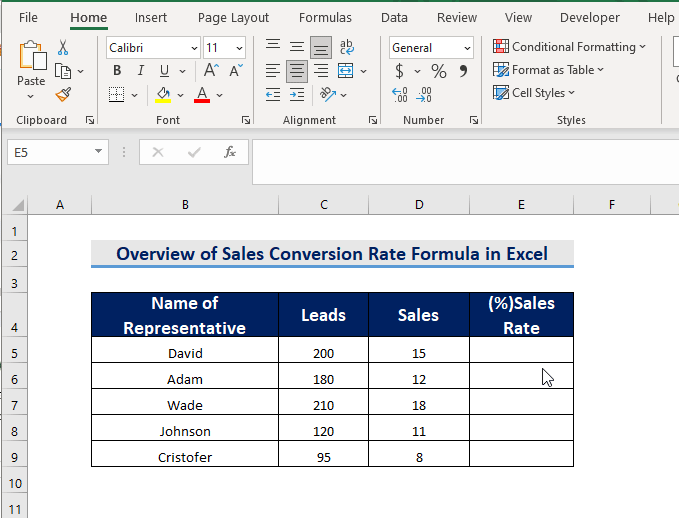
What Is the Sales Conversion Rate?
The Sales Conversion Rate metric determines the effectiveness of the sales team at converting leads into new customers, and is used amongst other things to determine the quality of leads. The formula to calculate the Sales Conversion Rate is:
How to Calculate the Sales Conversion Rate Using a Formula in Excel: 2 Suitable Examples
Here are two examples of applications of the Sales Conversion Formula in Excel.
Example 1 – Using the Sales Conversion Rate Formula to Analyze the Performance of Employees
We can use the Sales Conversion Formula to analyze the performance of sales representatives, for example to determine if they met their targets. The following dataset shows the number of leads per representative of a company and consequent sales.
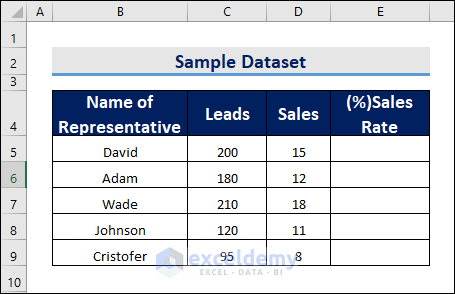
Let’s calculate the sales rate formula for each representative in the dataset.
Steps:
- Apply the following formula in cell E5:
=(D5/C5)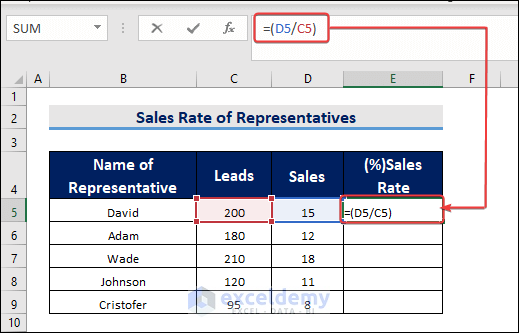
- Press ENTER to get the value.
- Select Percentage as the number format for the cell.
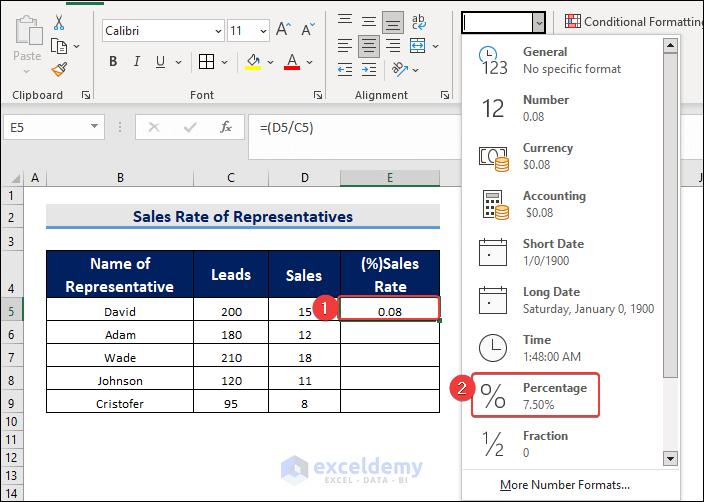
We have the percentage value in cell E5.
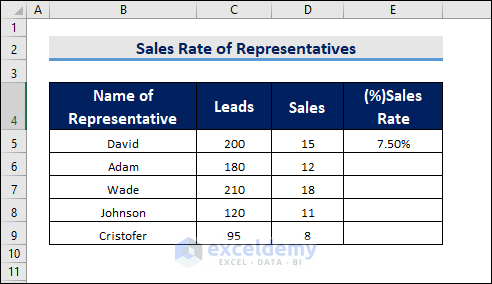
- Use the AutoFill feature to fill the remaining cells.
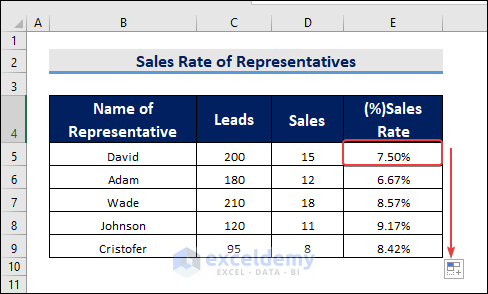
Example 2 – Using the Sales Conversion Rate Formula to Find the Percentage of Tickets Sold
Suppose we have the dataset below of a company selling bus tickets. We have the numbers of sold and unsold tickets, plus the number sold online.
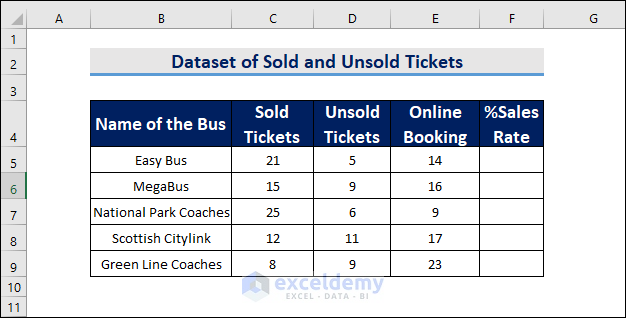
Let’s calculate the percentage of sold tickets by using the Sales Conversion Formula.
Steps:
- Apply the following formula in cell F5:
=SUM(C5+E5)/SUM(C5+D5+E5)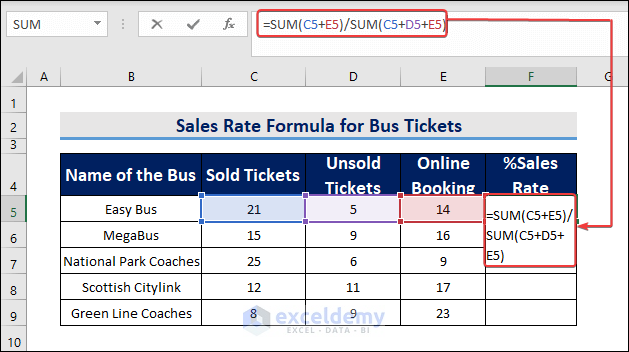
- Press ENTER to return the value.
- Apply Percentage formatting to the cell.
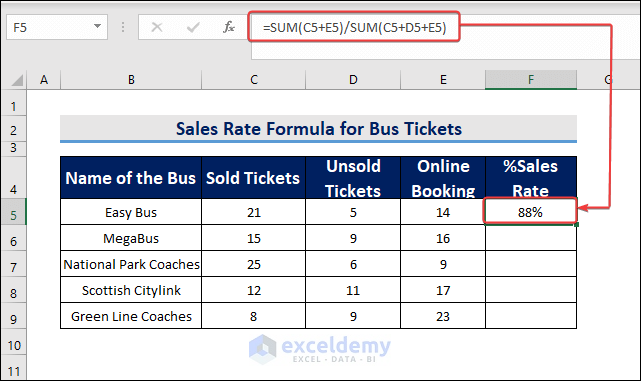
- Use the AutoFill feature to fill the remaining cells in the same row.
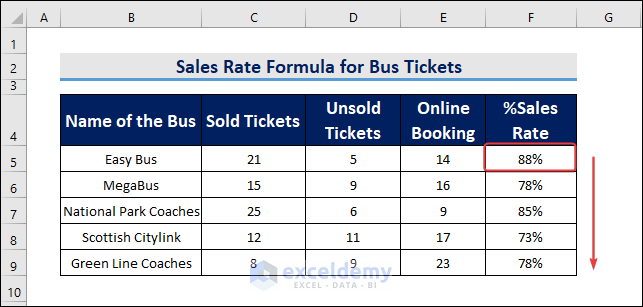
Calculating Sales from the Sales Conversion Rate Formula in Excel
Now let’s consider the reverse situation. If we have the Sales Conversion Rate of a particular shop, we can easily calculate the Total Sales of that shop given the number of Leads by multiplying the total number of Leads by the Sales Conversion Rate. The formula will be:
Sales = Leads * Sales Conversion Rate
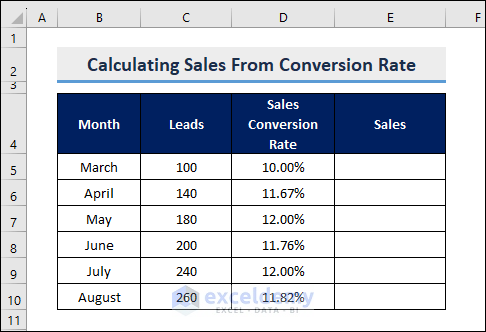
Steps:
- Apply the formula below in cell E5:
=C5*D5
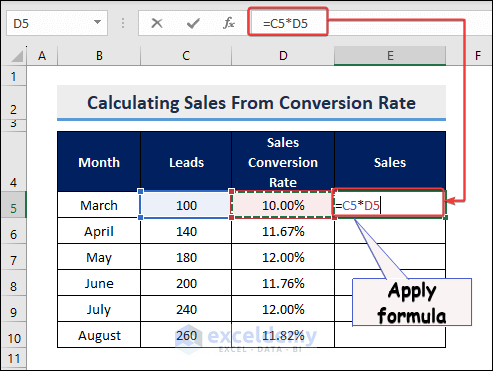
After pressing ENTER, cell E5 gets the value of the corresponding sales for the month “March”.
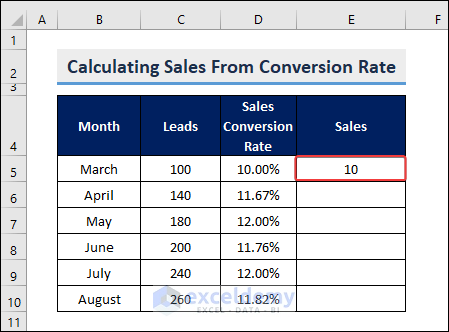
- AutoFill the remaining cells.
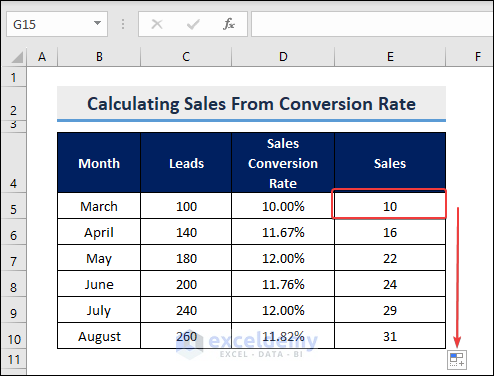
Note: We can also use the above process to calculate daily sales by substituting months for days.
What Is a Good Sales Conversion Rate?
There is no fixed or universal benchmark for a good sales conversion rate as it can vary depending on several factors, such as industry, product or service type, target audience, pricing strategy, and marketing channels.
A typical e-commerce conversion rate for an online store is around 2-3%, but it can range from 1% to 5% or higher.
Ultimately, what matters is not the absolute number, but the trend and improvement over time. A business should regularly track its conversion rate, test different strategies, and optimize the website and sales process to increase the conversion rate while maintaining profitability.
Relationship Between Sales Conversion Rate and Profitability
The sales conversion rate and profitability of a business are closely related. Sales conversion rate refers to the percentage of potential customers who actually make a purchase from a certain business. Profitability, on the other hand, refers to the ability of a business to generate income that exceeds its expenses.
When a business has a high sales conversion rate, it means that a larger percentage of potential customers are making purchases, which can lead to increased revenue. However, businesses should also focus on increasing the average order value (AOV) of their customers, which will generate more revenue per transaction.
So in short, while increasing the sales conversion rate can lead to increased revenue, it is also important to consider the cost of acquiring customers and focus on increasing the average order value to maintain profitability.
Things to Remember
- The sales conversion rate is a percentage value, so convert all the output into percentage format before finishing the calculation.
Download Practice Workbook
Frequently Asked Questions(FAQs)
1. What do the terms “Number of Sales” and “Number of Leads” mean in the formula?
The term “Number of Sales” refers to the total number of sales made during a specific period, such as a month or a quarter. The term “Number of Leads” refers to the total number of potential customers who visited your website or landing page during the same period.
2. Can I use Excel to track my sales conversion rate over time?
Yes, by creating a table that includes the number of sales and leads for each period.
3. What are some ways to improve my sales conversion rate?
There are many ways to improve your sales conversion rate, including improving the design and content of your website or landing page, optimizing your marketing campaigns, using social proof, and offering incentives to customers who purchase.
<< Go Back to Sales | Formula List | Learn Excel
Get FREE Advanced Excel Exercises with Solutions!

